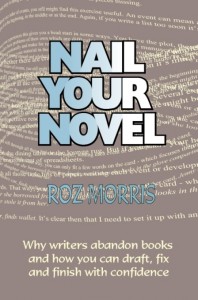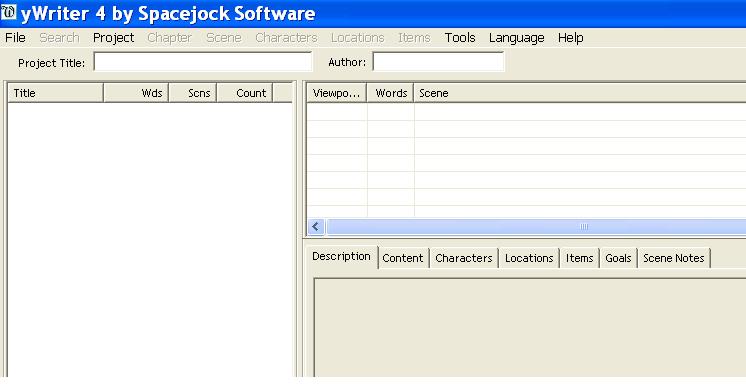There is an adage: if the teacher is working too hard, the students aren’t working hard enough. There are many cases where this is true: in a writing conference when the teacher is… Continue reading ![]()
Viewing: Blog Posts Tagged with: plan, Most Recent at Top [Help]
Results 1 - 19 of 19
Blog: TWO WRITING TEACHERS (Login to Add to MyJacketFlap)
JacketFlap tags: units of study, plan, preparation, Add a tag
Blog: TWO WRITING TEACHERS (Login to Add to MyJacketFlap)
JacketFlap tags: curriculum, plan, writing workshop, minilesson, link, preparation, procedures, curriculum planning, independent writing, Add a tag
It's all about the link. Make sure your minilessons link to ongoing work. Link to making choices. Link to all the other minilessons. Link to the charts and resources in the room. Most of all link your minilesson always to problem solving and independence.![]()
Blog: TWO WRITING TEACHERS (Login to Add to MyJacketFlap)
JacketFlap tags: common core, publishing, goals, plan, writing workshop, units of study, Add a tag
Blog: TWO WRITING TEACHERS (Login to Add to MyJacketFlap)
JacketFlap tags: nonfiction, plan, modeling, primary grades, graphic organizer, informational writing, Add a tag
We will be starting a unit on informational writing to wrap up the school year. I wanted to demonstrate a different way of finding a topic, a narrow topic. I find that young… Continue reading ![]()
Blog: TWO WRITING TEACHERS (Login to Add to MyJacketFlap)
JacketFlap tags: noticings, writing workshop, lucy calkins, speech, prompts, Teachers College, routines, scheduling, procedures, precise language, shared writing, oral language, independent writing, oral storytelling, scaffolding charts, storytelling, literacy, education, stories, vocabulary, classroom, plan, Add a tag
It’s been several months since I’ve written for Two Writing Teachers. In December my son was born, and I was on maternity leave until a few weeks ago. Then, in March I pushed aside all excuses… Continue reading ![]()
Blog: TWO WRITING TEACHERS (Login to Add to MyJacketFlap)
JacketFlap tags: narrative, plan, Add a tag
I’ve been trying to think through how to explain thinking in scenes to young writers in a way that makes it accessible. It seems they either write two scenes and call it done… Read More ![]()
Blog: The Butterfly Heart (Login to Add to MyJacketFlap)
JacketFlap tags: Bangladesh, Uncategorized, Plan, child marriage, Add a tag
As a short follow on the the previous post I came across this article by Kiran Flynn in The Guardian .
What caught my attention this: A large colourful sign outside the Bashbari village in Sreepur, Bangladesh, declares it “Child Marriage Free”, and its Village Development Committee proudly states that “since March 2011, we have had no child marriages”
The committee in Bashbari village, took part in community education programmes organised by Plan International. “We have been spreading the message to our community” says 25-year-old Rani from the committee. “Everybody discussed and then took an oath not to give children in marriage before 18.”
Great initiative!
Blog: TWO WRITING TEACHERS (Login to Add to MyJacketFlap)
JacketFlap tags: process, plan, primary grades, graphic organizer, collecting, Add a tag
I’m super fortunate to be working with a couple of third grade teachers (Hi Sandy & Dan!) who are interested in helping their writers to naturally develop more sophisticated writing processes. Their students are coming off of heavy illustration study in their previous writing experience (in grades k-2), so we are trying to find a [...]![]()
Blog: TWO WRITING TEACHERS (Login to Add to MyJacketFlap)
JacketFlap tags: process, plan, jacqueline woodson, minilesson, anchor chart, fiction, Add a tag
Last month at MRA, I listened to Jacqueline Woodson speak about her writing process. It wasn’t the first time I heard her speak and I hope it won’t be my last. She is one of the writers I consider as my personal mentor. Not to be over-dramatic, but listening to her last month changed my [...]![]()
Blog: Darcy Pattison's Revision Notes (Login to Add to MyJacketFlap)
JacketFlap tags: novel, character, plot, plan, outline, how to write, novel revision, Add a tag
Which camp do you fall into? Do you plan your novel extensively before you write a single word? Or, do you improvise as you go along?
A friend is starting a new novel at the same time I’m working on a new novel and it’s interesting to see the difference in our approach.
 Character. He’s all about character and says that he just tries to set up the characters, then get out of the way and let them do things. He creates them intuitively. He doesn’t want to know what comes next because that would be boring.
Character. He’s all about character and says that he just tries to set up the characters, then get out of the way and let them do things. He creates them intuitively. He doesn’t want to know what comes next because that would be boring.
I like character, too, but can’t get my characters to work without getting to know them pretty well, by which I mean, some deliberate reflections about who they are and how they would react in different situation. I want to know how the character fits into the plot, the setting, the overall tone, the voice, the imagery–then, I can start writing.
Plot. My friend rarely worries about plot. He has some ideas about where the story will go, but seems to be able to relentlessly push the characters into conflict.
I like knowing the ending and some of the high points before I start. It’s not a complete, obsessive, scene-by-scene synopsis; but it’s some structure. Again, I like having some gestalt–an overarching idea of the story–and how this piece fits into the bigger picture.
Big Picture or Seat-of-your-Pants?
Of course, either way works for that first draft. I believe that in the revision phase, you DO have to take a look at the big picture to make sure everything fits into place.
First drafts are about getting the story on paper, however you need to. Revisions are about putting the story into the most dramatic format possible, so the reader sticks with you for the whole story.
So, however you want–just get the story on paper.
Blog: TWO WRITING TEACHERS (Login to Add to MyJacketFlap)
JacketFlap tags: books, poetry, fiction, point of view, publishing, writing process, organization, curriculum, process, reflections, narrative, writer's notebook, genre, plan, character development, mentor texts, writing workshop, lesson plans, mentoring, primary grades, drafting, free verse poetry, lessons learned from students, mentor author, choice, personalization, curriculum planning, focus lesson, reflective practice, Add a tag
I have been in a lot of different writing workshops lately. Just this week I’ve been in 13 writing workshops and have met with 13 different teachers in either reflective practice meetings or planning meetings. Therefore, I have SO MUCH I want to record. Which leads me to my current dilemma: what do I not [...]![]()
Blog: Darcy Pattison's Revision Notes (Login to Add to MyJacketFlap)
JacketFlap tags: how to write a novel, outline, confidence, NaNoWriMo, plan, resource, first drafts, first draft, revise, Add a tag
Review of
Nail Your Novel by Roz Morris
British author and writing teacher Roz Morris has a new book out just in time to help you with that first draft of your new novel. You know, the one you’re going to write in November for National Novel Writing Month, better known as NaNoWriMo.
Hiccups in your Confidence and Motivation
Morris writes with great wit and wisdom about the writing process, starting with those awkward moments when you actually admit, “Yes, I’m, uh, writing, well, you know, something a bit longer. Maybe, a, uh, a novel.”
Writing always begins here, by acknowledging the writer as a person with the usual insecurities. Morris address this directly by providing you with some structure. No, structure isn’t for everyone, but for beginners, structure can be a comfort and save them a lot of time. Her process involves a series of tasks, breaking down the process into smaller steps:
- Task 1: Shaping your inspiration
- Task 2: Starting this specific novel
- Task 3: Focused research
- Task 4: A structural survey for you novel
- Task 5: Detailed synopsis
- Task 6: How to free your muse and turn off your inner critic
- Task 7: Before you look at your manuscript again
- Task 8: The beat sheet game
- Task 9: Revising your manuscript
- Task 10: Your submission process
Help for NaNoWriMo writers
Authors embarking on the month-long adventure of writing 50,000 words in November will appreciate the first few tasks. Morris gives you direction on how to thicken the plot, find inspiration, decide what does NOT belong in the book, accept random input, and generally get the overall story thought out.
Research (Task 3) can flesh out details further:
“Research might throw up all sorts of interesting situations. For instance, I was commissioned to write a novel about people selling kidneys in India. Reading about the poverty in the villages inspired the start of the story – a young girl decides to sell her kidney to get her family out of debt. Of course, once she’s in the clutches of the butchers, she changes her mind, poor love. Meanwhile, her family are desperate to get her back.”
Overall, Morris’ experience enhances the book. This is a process she is intimately acquainted with and daily practices. Even if you’re experienced, I recommend the book as a review for concepts you already know. Because I think you’ll also find some unexpected nuggets. And for more nuggets, read Roz Morris’ blog, Dirty White Candy (Yes, a strange name for a blog, you say. Morris explains it on her home page). Example of her posts: How to Make Readers Root for Your Character
 NaNoWriMo Special!
NaNoWriMo Special!
For three weeks, until 21 October, you can download the e-book of Nail Your Novel for 99p! That’s a whopping £2 off the usual price of £2.99. So if you’re preparing a book for NaNoWriMo this will help you firm up your plans, fill your plot holes – so you are ready to blast off on 1 November with confidence. Just click on the pic!
Related posts:
Blog: The MJM Books Blog: Featuring all kinds of info you never knew you needed! (Login to Add to MyJacketFlap)
JacketFlap tags: Adventure, Plan, Map, Evacuation, Confusing, Escape, Miscellaneous Thoughts, Choose your own, Flowchart, Add a tag

Can you figure out how to get out of here? Me neither! This was posted in one of the conference rooms at the Intercontinental Hotel in downtown Chicago (I followed Krista on another Staycation!). It reminds me of this flow chart representing all the choices involved in the Choose Your Own Adventure book “Journey Under the Sea”.

If you take a look at the data breakdown, over 75% of all possible outcomes are “unfavorable”, and almost half result in death. That is why this “Evacuation Plan” makes me so nervous! Take another look: choose carefully, because you can’t keep a finger on the page you’re leaving “just in case”…

MJM Books is currently developing an online “Choose Your Own Fairytale” application that will have a much higher success rate and an expanded range of adventure (it’s easier to have more pathways/pages if they’re digital instead of printed). Until then, there is a much lamer wiki that contains non-illustrated COA’s. I tried one and ended up following a duck trying to feed it an oatmeal raisin cookie. Something tells me that not all “adventures” are created equal.
…
Blog: Darcy Pattison's Revision Notes (Login to Add to MyJacketFlap)
JacketFlap tags: novel, character, revision, outline, organize, emotional arc, narrative arc, plot, plan, YWriter, recommended software, SpaceJock, Add a tag
While my WIP novel is out with readers, I thought I’d look at my process for this novel and how it differed from others.
Writing Process for Novels Vary Widely
So, I went looking for ways to improve the emotional life of my characters and found several helpful books and ideas on a character’s emotional arc.
I’ve used many different ways of plotting and I’ll tell you, never has index cards worked for me. I’ve used spreadsheet plotting and I like it very much. So, I simply added a column for the emotional state of the characters. It did work, but somehow, it didn’t seem to get me moving through the story well.
Enter YWriter, a free program that helps you plan and organize a novel. This time, since I wanted to do a better job of planning, especially the characters’ inner lives, YWriter was fabulous. It has logical and helpful screens that lay out the scenes, plots, who is present in the scene, setting, and I even found a place on the character tabs to add in the emotional reactions.
 (Click to enlarge screen shot.)
(Click to enlarge screen shot.)
After planning, YWriter has screens where you can actually write the novel, in a pared down word processor (import/export is easy in rtf file formats, compatible with any word processor).
I found that part of my process stayed the same. I plan and plan, then write, only to find that about halfway through, I have to stop and replan, because the writing has changed so much. Halfway through this novel, I stopped and had to replan. But this time, it seemed too tedious to go back and update every screen in YWriter; I abandoned the program and went back to my word processor alone, with occasional reference back to the YWriter plot.
YWriter was a good experience for me and I’ll probably use it again, because it allowed me to organize so much in one centrally located file. Will I use it next time? I don’t know. I may go back to spreadsheet plotting. But I know I was glad to expand my novel writing tool box with this great program.
Post from: Revision Notes Revise Your Novel! Copyright 2009. Darcy Pattison. All Rights Reserved.
Related posts:
Blog: TWO WRITING TEACHERS (Login to Add to MyJacketFlap)
JacketFlap tags: narrative, writer's notebook, plan, writing workshop, personal narrative, penny kittle, storyboard, Add a tag
This summer I heard Penny Kittle speak about using storyboards. This week I’ve tried them out in classrooms. They aren’t all that different from one of the ways I talk to kids about planning. I encourage them to think in scenes & then sketch in their notebook a flow chart of sorts, using pictures and [...]
Add a CommentBlog: TWO WRITING TEACHERS (Login to Add to MyJacketFlap)
JacketFlap tags: reading, plan, writing workshop, conferring, routines, independent work time, plan box, Add a tag
I wrote a post about structures and routines to teach kids in September within the context of Writing Workshop yesterday morning. There have been a few questions about “The Conferring Scarf.” Therefore, I wanted to find a photograph (of two of my former students from NYC who decided to act out a conference, [...]
Add a CommentBlog: TWO WRITING TEACHERS (Login to Add to MyJacketFlap)
JacketFlap tags: books, plan, mentor texts, wiki, Add a tag
The view of the water from the back of OceanCliff Originally uploaded by teachergal We got all of our writing and reading teaching points solidified for the rest of the school year when we were at OceanCliff yesterday. However, we went a step farther and did [...]
Add a CommentBlog: TWO WRITING TEACHERS (Login to Add to MyJacketFlap)
JacketFlap tags: writing process, writing, writers, writer's notebook, plan, Add a tag
Kelly asked about plan boxes. Since I happen to have one of my student’s old notebooks at my apartment this evening, I photographed six plan boxes to share with you. You can view them by clicking here (they’re stored on Flickr). I hope that having the visual of some of this student’s [...]
Add a CommentBlog: TWO WRITING TEACHERS (Login to Add to MyJacketFlap)
JacketFlap tags: plan, expository, literary essay, writing workshop, teacher of writing, responsive classroom, news and announcements, thesis statement, drafting, Add a tag
My students are going to be drafting while I’m out of the room doing reading assessments this-coming Thursday. Hence, I’m a little bit panicked since I don’t like being out of the room on days when kids are selecting a seed idea or when they start drafting. (I have an amazing guest teacher… [...]
Add a Comment



